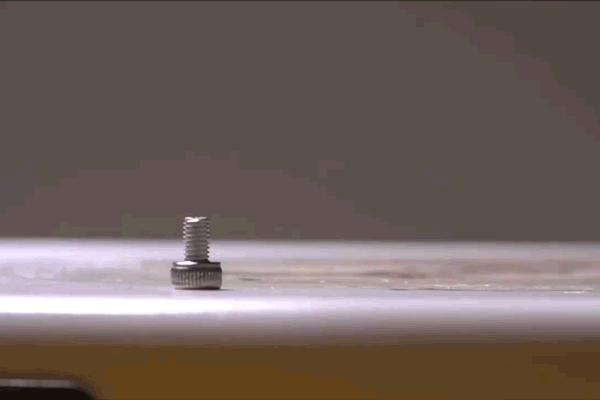These 3-D Printed Polymers Have Shape-Memory Abilities
August 31, 2016
MIT engineers have developed three-dimensional structures that can "remember" their original shapes, even after being stretched, bent, and twisted at extreme angles.
Kristopher Sturgis

Researchers at MIT have created 3-D printed multimaterial structures, made of shape-memory polymer materials, that are able to spring back to their original form within seconds of being heated to a specific temperature.
Engineers used light to 3-D print a variety of different structures with features as small as the diameter of a human hair--dimensions that are merely one-tenth the size of any previously printed structures from shape-memory materials, according to MIT.
Nicholas X. Fang, associate professor of mechanical engineering at MIT and one of the authors on the research, explained how these structures could have an impact on medical devices and drug delivery vehicles.
"Our technology enables micro-scale 3-D fabrication," he said. "Which, on one hand allows us to print 3-D medical devices whose structure on the millimeter scale is compatible to the human esophagus artery and intestinal canal. On the other hand, the refined microstructure can react quickly to release drugs with a more precise dosage. This technology combines 3-D printing with shape memory polymers, making 3-D printed structures shape-changeable--which could have medical applications such as stents, heart valves, and septal defect occluders."
Fang and his colleagues believe that shape-memory polymers that can predictably change shape in response to temperature could be ideal for these kinds of applications. He says that these materials offer the kind of structural shape and resilience to perform valuable functions, and the process is remarkably simple.
"The trick we are playing is pretty similar to inserting a flying Dutch ship into a glass bottle," Fang says. "The class of materials are thermoset polymer networks similar to epoxy. When the network is heated to temperatures above glass transition temperature, the polymer networks can move freely as entangled spaghetti, making the structure soft and deformable. In the reverse process, when you cool the sample to below glass transition temperature, the networks are frozen so the material is rigid and strong."
 Fang says that using this mechanism, they can specifically program 3-D printed structures by deforming them at high temperatures, and then freezing the deformed shapes quickly. Then, once the structure is heated back to the higher temperature, the polymer network will spring back to its original shape. The next step was to devise a way to trigger these materials to spring into action inside the body.
Fang says that using this mechanism, they can specifically program 3-D printed structures by deforming them at high temperatures, and then freezing the deformed shapes quickly. Then, once the structure is heated back to the higher temperature, the polymer network will spring back to its original shape. The next step was to devise a way to trigger these materials to spring into action inside the body.
"We think one possible way to activate shape memory polymers inside the body is through temperature changes, like a fever," Fang says. "Another possible way to activate shape change is to use pH sensitive materials to replace shape memory polymers. So far our material cannot be absorbed naturally by the body, but we have made plans to use biodegradable shape memory polymers to 3-D print medical devices."
3-D printing technologies continue to evolve, as more and more researchers experiment with new materials to explore the potential and various possibilities of novel 3-D printed solutions. While Fang admits that there are a few other 3-D printing technologies that use shape-memory polymer materials, he maintains that their method uses materials with superior properties when it comes to stretchability and tunability of glass transition temperature. He also says that his group has plans to modify the current system to realize mass production, which should further reduce the cost while also increasing the speed of manufacturing.
"All the devices, parts, and materials used in this technology are commercially available," he says. "In order to move forward with our research, we are looking for collaborators from hospitals and medical schools to help us conduct clinical studies and provide the useful feedback we need about the feasibility of our method, so we can work toward more medical applications."
Kristopher Sturgis is a contributor to Qmed.
Like what you're reading? Subscribe to our daily e-newsletter.
[Images courtesy of MIT]
About the Author(s)
You May Also Like

.png?width=300&auto=webp&quality=80&disable=upscale)
